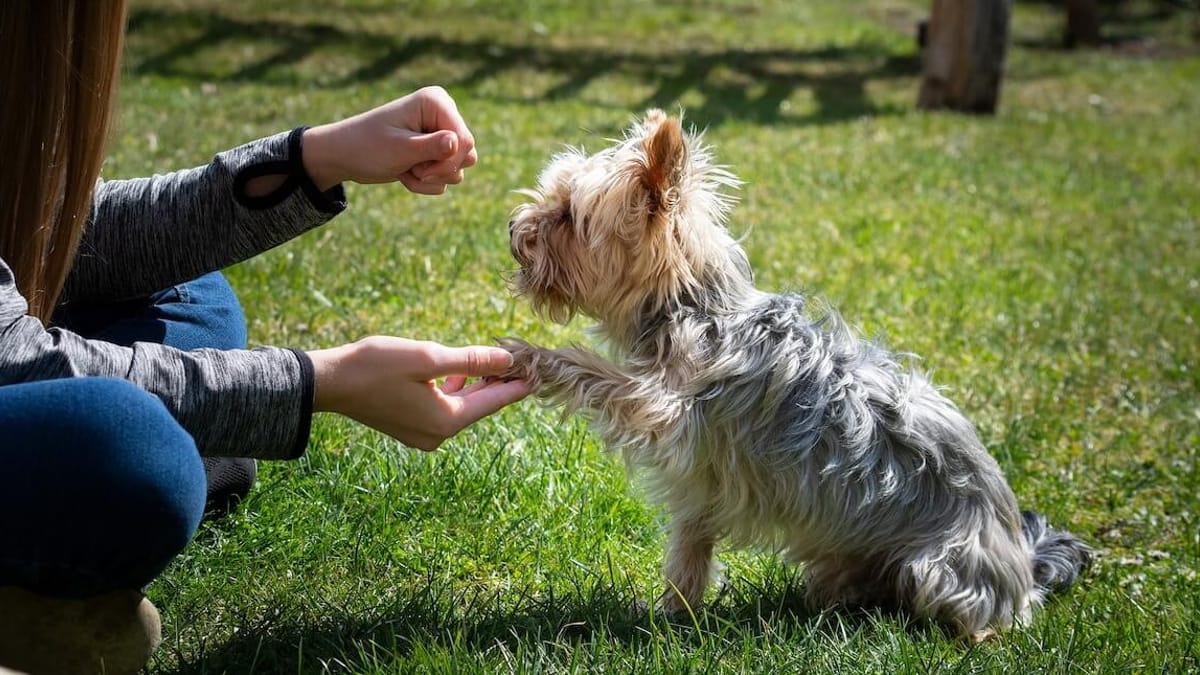Fido has just entered the house and… the adventure begins! Food, leash, toys, bed, everything is ready to start a life of cuddles and tenderness together, without forgetting his education.
Il positive reinforcement with the dog it is an educational method that respects the animal and allows a constructive approach without violence. Let’s find out together what it is and how to put it into practice.
What is Positive Reinforcement?
Positive reinforcement is a gentle, non-violent educational method that involves reward of acting appropriately in a given circumstance. Simply put, positively reinforcing the dog’s good deeds means encourage him to repeat the behavior systematically rewarding the specimen with a pleasant stimulus.
Dogs are “opportunistic” animals by nature and seek what satisfies them, for this reason they will do anything to repeat the behavior that allowed them to get a reward.
When is reinforcement negative?
Negative reinforcement, on the other hand, is an old and outdated technique that involves the use of force or an unpleasant coercion. The dog therefore quickly assimilates the master’s commands for fear that the coercion will be repeated.
Examples of positive and negative reinforcement in dogs
Here are two examples of these two types of reinforcement:
- Positive Reinforcement: to teach the dog to keep up when he’s on a leash, reward him with a kibble or a snack when he puts this behavior into practice once he’s on the road.
- Negative Reinforcement: to teach the dog to lie down, you start by using a choke chain, to then put pressure on the leash with your foot and force the dog to assume the desired position. If the animal lies down, the pressure (unpleasant constriction) is removed so that the desired behavior is repeated.
What are positive reinforcement tools with the dog?
To train the dog with positive reinforcement it is possible to use “tools”, such as food, cuddles or games.
It should be noted that every owner knows his own specimen, so it’s up to us humans to know what will give him the most pleasure as a reward. There is therefore no universal rule on which tools to use as a reward. Some dogs prefer a reward that fills their stomach, so food will allow them to double their efforts in exercises, others will prefer to play or again, specimens are very tactile, they will be satisfied with a caress.
What to watch out for
To reinforce the dog’s good deed, it is important that the reward is an exception otherwise it has no value in the dog’s eyes and is therefore useless. For example, if you give your dog some snacks during the day for no reason, it will not be possible for him to distinguish this type of food from a snack offered as a reward for good behavior.
The same last goes for a toy that is used to reward him: it must be a specific game that is used for the sole purpose of rewarding a good deed.
Finally, if you spend all the time petting him, the petting will not be interpreted as a signal of reinforcement, but as a habitual behavior.
Are there any positive reinforcement techniques for a difficult dog?
Each specimen is the result of its upbringing, its genetics, its life experiences and its environment. As owners, it is our responsibility to allow the animal to be socialized and educated in the best possible way.
Training is important because the dog must know what is expected of him. Fours often want to please their humans, but if they don’t know what is expected of them, any behavior can become a stressor.
If you have behavior problems, it’s important consult an expert. At a good dog school or with a competent trainer, problem behaviors can be worked on and can be improved, or completely eliminated, by working with your pet through the application of positive reinforcement.
It is a job that is done on the dog, but also on the owner. In fact, thanks to the positive reinforcement we work not only on a series of wrong behaviors of Fido, but also on the bad dog-master communication and on the inadequate behaviors of us humans. Often, to educate a dog well you have to start with the owner!

